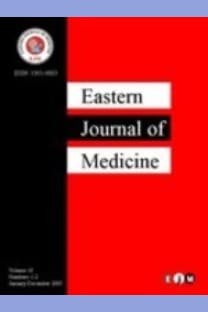Double superior vena cava (persistent left superior vena cava draining into the coronary sinus) - case report
Double superior vena cava (persistent left superior vena cava draining into the coronary sinus) - case report
Persistent left superior vena cava, coronary sinus, retrograde cardioplegia, resynchronization therapy echocardiography, computed tomography,
___
- Chandra A, Reul GJ Jr. Persistent left superior vena cava. Discovered during placement of central venous catheter. Tex Heart Inst J 1998; 25: 90. Biffi M, Boriani G, Frabetti L, Bronzetti G, Branzi A. Left superior vena cava persistence in patients undergoing pacemaker or cardioverter-defibrillator implantation: a 10-year experience. Chest 2001; 120: 139-144.
- Paval J, Nayak S. A persistent left superior vena cava. Singapore Med J 2007; 48: 90-93.
- Erdoğan M, Karakaş P, Uygur F, et al. Persistent left superior vena cava: the anatomical and surgical importance. West Indian Med J 2007; 56: 72-76. Ying ZQ, Ma J, Xu G, Chen MY. Double superior vena cava with a persistent left superior vena cava. Intern Med 2008; 47: 679-680.
- Goyal SK, Punnam SR, Verma G, Ruberg FL. Persistent left superior vena cava: a case report and review of literature. Cardiovasc Ultrasound 2008; 6:
- ISSN: 1301-0883
- Yayın Aralığı: 4
- Başlangıç: 1996
- Yayıncı: ERBİL KARAMAN
Korhan SOYLU, Cahit KOCAKAVAK, Sabri DEMİRCAN, Diyar KÖPRÜLÜ, Serkan YÜKSEL, İhsan DURSUN, Kenan DURNA, Mustafa YAZICI, Mahmut ŞAHİN, Özcan YILMAZ
Antenatal diagnosis of placenta increta and its successful conservative management with methotrexate
Ayse GÜLER, Nermin KOSUS, Arzu TURAN, Zeki MİL
Living in rural areas is a major risk factor for severe burn injury in Turkey
Fat embolism: A report of three cases
Elif TANRIVERDİO, Aysegul KARALEZLİ, Aysegul SENTURK, Berna Botan YİLDİRİM, Hatice Canan HASANOGLU
Vivek SİNGH, Vaishali TOMAR, Sunil KUMAR, Rakesh K. GUPTA
Leyla BAHAR, Semra KAHRAMAN, Bora REŞİTOGLU, Tülin BAYKAL
A study of epidemiological factors affecting low birth weight
Humera HAYAT, Parwez Sajad KHAN, Gazala HAYAT, Rehana HAYAT
Advance stage small cell neuroendocrine carcinoma of cervix: A case report
Recurrence of tuberculosis as a cerebral abscess in a patient with systemic lupus erythematosus
Felipe Montes PENA, Raphael Freitas Jaber De OLİVEİRA, Andréya Moreira De Souza SOARES MACHADO
